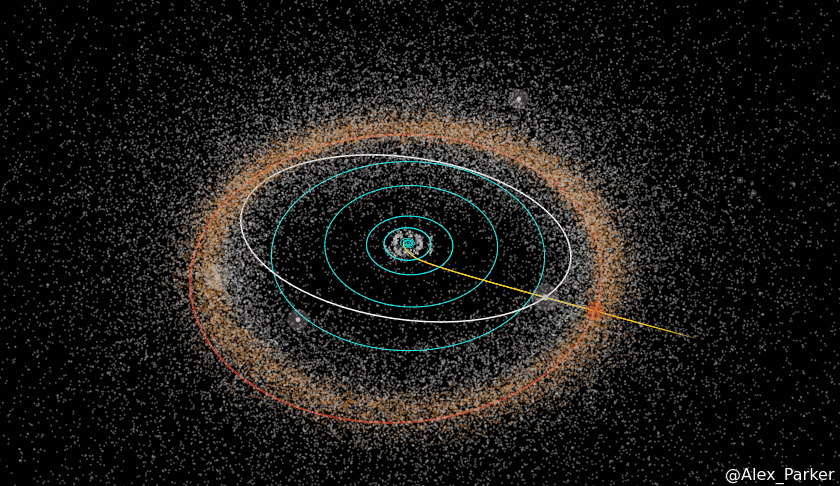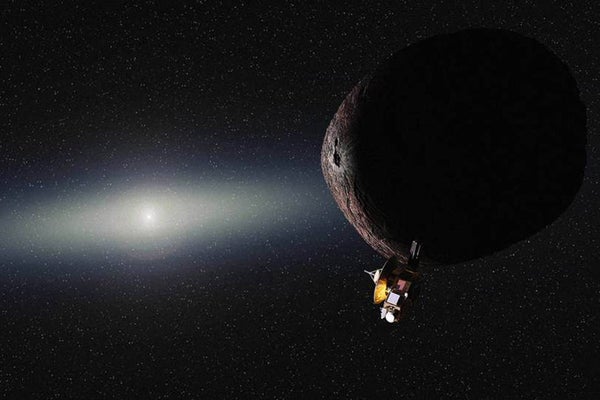This article was published in Scientific American’s former blog network and reflects the views of the author, not necessarily those of Scientific American
What do you do when you've flown 3 billion miles through interplanetary space?
You keep going.
Although NASA's New Horizons mission has only just begun to transmit the bulk of the detailed scientific data from its history-making encounter with the Pluto-Charon system (at an excruciatingly slow 2 kilobits per second) the spacecraft team has been hard at work on a critical, and time-sensitive, decision.
On supporting science journalism
If you're enjoying this article, consider supporting our award-winning journalism by subscribing. By purchasing a subscription you are helping to ensure the future of impactful stories about the discoveries and ideas shaping our world today.
It had long been hoped that New Horizons would be able to deploy its instruments to study further objects in the Kuiper belt. But back in early 2014 it wasn't clear that astronomers and planetary scientists were going to be able to find any suitable candidates within the range of trajectories that the mission - with its limited on-board fuel resources - could reasonably adjust to. Despite searching with Earth-bound telescopes it was clear that our understanding of the number of objects smaller than Pluto (but still large enough to study) was incomplete, as candidates were in short supply.
Using the Hubble Space Telescope in the summer of 2014, in what was a bit of a last-ditch attempt, there was huge relief as just five plausible targets finally revealed themselves, with two later confirmed to be good for an intercept.
The first of these, called PT1 (potential target one) or more officially 2014 MU69, has now been chosen as the next goal for New Horizons.
This object is thought to be at most 30 miles across - akin to a cometary nucleus on steroids - and barely 1% the size of Pluto. In other words, it's an entirely different beast than Pluto, but it may be the kind of body that helped form Pluto itself some 4.5 billion years ago, and it's within reach for New Horizons at a mere billion miles further along the interplanetary road.
The exact location of PT1 is shown in this wonderful animation as the brighter orange dot along the proposed spacecraft trajectory.

The ring-like 'cloud' of orange dots represent a speculative distribution of 'classic' Kuiper belt objects - known ones are highlighted with larger white points, and PT1 is in brighter orange. Major planetary orbits are shown, along with the New Horizons trajectory which has already intersected Pluto's orbit (Credit: Alex Parker)
To make sure that New Horizons zips by PT1 in early 2019 the spacecraft must make a series of 4 maneuvers with its hydrazine fueled engines in October and November of this year. Which is why the decision is a time-sensitive one. As it is, reaching PT1 requires a relatively modest 30% or so of the remaining fuel, leaving plenty for future exploits.
One Earthly hurdle is that NASA must still approve and find the funds to support this extended scientific mission, since the agency is forced to run a lean operation (in total NASA receives barely 0.5% of the total federal budget per year). We can only hope that humanity's first visit to the ancient Kuiper belt, and new clues to our own origins, is not stymied by a cost that's less than what some wealthy individuals seem to spend on tasteless mansions and other trinkets.
